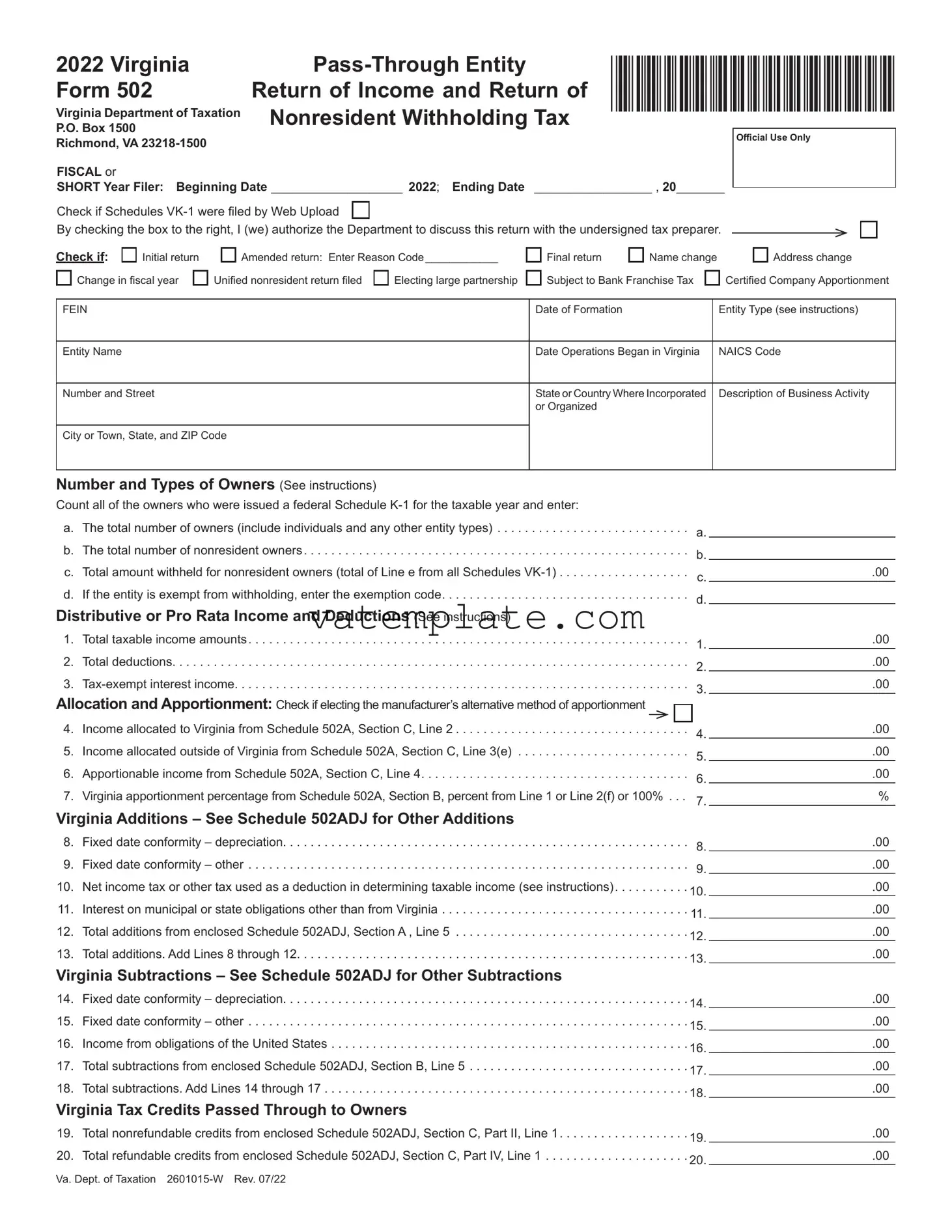Section 2 – Penalty and Interest Charges on Withholding Tax
5.Extension penalty (may apply to returns filed within extension period if 90% of Line 1 is not paid timely) . . . .
6.Late payment penalty on tax due (will apply if there is a balance due on Line 4 and Form 502 is being filed more than 6 months after the original due date). Enter 30% of the amount on Line 4 . . . . . . . . . . . . . . . . . . .
7.Interest (may apply if there is a balance due on Line 4) . . . . . . . . . . . . . . . . . . . . . . . . . . . . . . . . . . . . . . . . . .
8.Penalty and interest charges due. Add Line 5 or Line 6 (whichever applies) to Line 7 . . . . . . . . . . . . . . . . . . .
Section 3 – Penalty for Late Filing of Form 502
9.If Form 502 is being filed more than 6 months after the original due date, or more than 30 days after the federal extended due date, enter $1,200. . . . . . . . . . . . . . . . . . . . . . . . . . . . . . . . . . . . . . . . . . . . . . . . . . . . . .
Section 4 – Withholding Overpayment
10.Net overpayment. If Line 8 or Line 9 exceeds Line 3, go to Line 13 below to compute the total payment due.
Compare Line 6 and Line 9. If Line 6 is greater than Line 9, subtract Line 8 from Line 3. If Line 9 is greater than Line 6, subtract Line 7 plus Line 9 from Line 3. Otherwise, enter overpayment amount from Line 3 . . . .
11.Amount of withholding overpayment to be credited to 2023 . . . . . . . . . . . . . . . . . . . . . . . . . . . . . . . . . . . . . . .
12.Amount of withholding overpayment to be refunded . . . . . . . . . . . . . . . . . . . . . . . . . . . . . . . . . . . . . . . . . . . . .
Section 5 – Tax, Penalty, and Interest Due
13.Balance of tax due plus extension penalty, if applicable. If there is an amount due on Line 4, enter Line 4 plus Line 5. If there is an overpayment on Line 3 and Line 8 or Line 9 is greater than Line 3, enter Line 5 minus Line 3 . . . . . . .
14.Interest charges on withholding tax from Line 7 . . . . . . . . . . . . . . . . . . . . . . . . . . . . . . . . . . . . . . . . . . . . . . . .
15.Late filing penalty. Enter the greater of Line 6 or Line 9 . . . . . . . . . . . . . . . . . . . . . . . . . . . . . . . . . . . . . . . . . .
16.Total payment due. Add Line 13, Line 14, and Line 15 . . . . . . . . . . . . . . . . . . . . . . . . . . . . . . . . . . . . . . . . . . .
Section 6 – Amount Due or Refund
17.Motion Picture Production Tax Credit to be refunded directly to PTE (see instructions) . . . . . . . . . . . . . . . . . .
18.Research and Development Expenses Tax Credit to be refunded directly to PTE (see instructions) . . . . . . . .
19.Credit to be refunded directly to PTE. Add Line 17 and Line 18 . . . . . . . . . . . . . . . . . . . . . . . . . . . . . . . . . . . .
20.Amount Due. If there is an amount due on Line 16 and the amount exceeds the amount on Line 19, subtract Line 19 from Line 16. . . . . . . . . . . . . . . . . . . . . . . . . . . . . . . . . . . . . . . . . . . . . . . . . . . . . . . . . . . . . . . . . . . . . .
21.Amount of Refund. If there is an amount due on Line 16 and the amount is less than the amount on Line 19, subtract Line 16 from Line 19. If there is an amount on Line 12, add Line 12 and Line 19 . . . . . . . . . . . . . . . .


